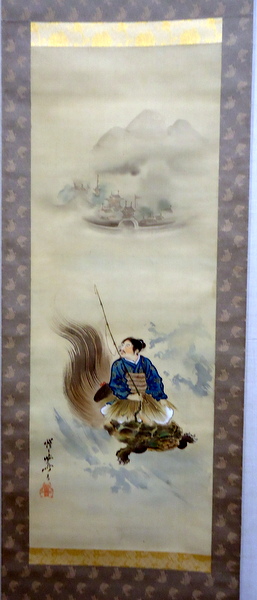Urashima Taro

- Japanese: 浦島太郎 (Urashima Tarou)
Urashima Tarô is a classic Japanese folk tale, which tells of a fisherman who after spending time in the Dragon King's Palace returns to find that hundreds of years have passed.
While the stories of Momotarô, Kintarô, and Issun bôshi only became popular in the Edo period, Urashima Tarô is one of the few widely-known Japanese folk tales that actually dates back to earlier eras. It appears in some of the earliest Japanese texts, including the 8th century Nihon shoki, Man'yôshû, and Tango no kuni fudoki.
These earliest versions of the story are more Shinto-inflected, and end with Tarô and the Dragon Princess being transformed into a crane and a turtle, respectively, and living on forever as Shintô spirits (myôjin). Later versions became more strongly reflective of Buddhist themes.
The first mention of the story in English was in an 1886 issue of Century Illustrated Magazine, in an article by Kataoka Masayuki entitled "Urashima: A Japanese Rip Van Winkle." Washington Irving's story of Rip van Winkle was then introduced to Japan by Mori Ôgai in 1899, in a story entitled Shin sekai no Urashima Tarô ("Urashima of the New World").
References
- Hayashi Kôhei, talk at Discovering the Japanese Collection at Brigham Young University Symposium, March 25, 2016.